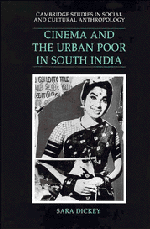7 - Filmmakers
from Part III
Published online by Cambridge University Press: 24 October 2009
Summary
The attitudes of a medium's creators toward their creation and their audience are significant for understanding the medium, especially when the creators differ from the main audience in class, gender, or some other fundamental feature. Their values and attitudes shape the content the audience receives, as well as the attitudes with which the audience itself apprehends the material. Exactly who constitutes the “creators” is a complicated matter in the case of commercial film, as it is with many media, because making such a movie is never an individual act. Filmmaking requires numerous technical and often creative assistants. To be successful, it also demands that attention be paid to audience preferences, and thus to some extent involves the audience in the creative process – a point that many filmmakers are reluctant to admit. Nonetheless, it is possible to isolate those who are most directly responsible for the creation of a film. In Tamil Nadu these are the directors, who generally have the strongest hand in determining a film's specific shape. The producers, those who put together the precious financing, may also wield considerable influence. For this reason – and because many producers have worked as directors, and many of the major directors also act as producers – I bracket both directors and producers together under the title of “filmmaker.”
- Type
- Chapter
- Information
- Cinema and the Urban Poor in South India , pp. 119 - 133Publisher: Cambridge University PressPrint publication year: 1993

